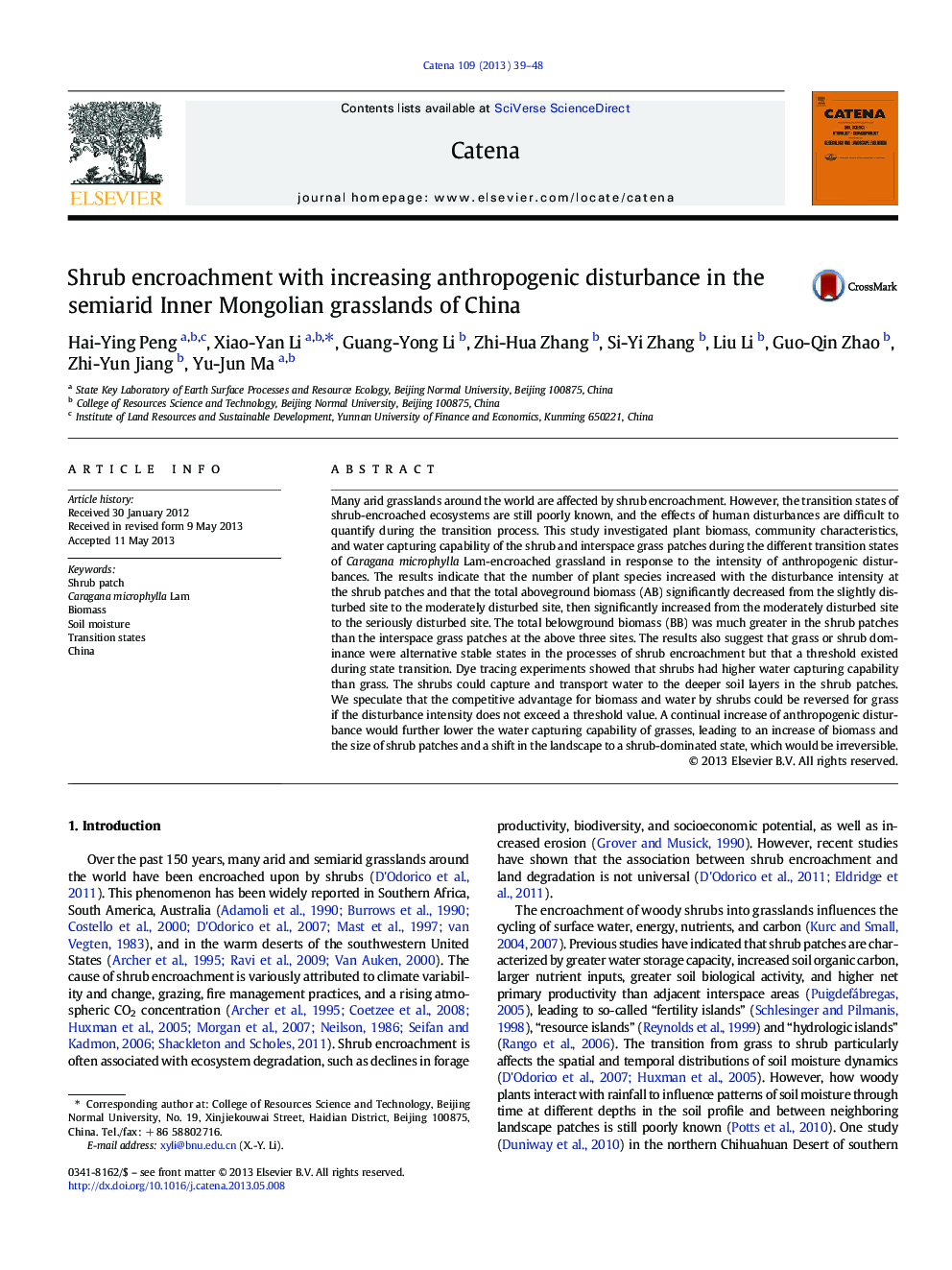| کد مقاله | کد نشریه | سال انتشار | مقاله انگلیسی | نسخه تمام متن |
|---|---|---|---|---|
| 4571568 | 1629243 | 2013 | 10 صفحه PDF | دانلود رایگان |

• Human disturbance was critical for states transition of shrub encroachment.
• Two states and a threshold existed during transition from grassland to shrubland.
• Shrub has higher water capturing capability than grass.
Many arid grasslands around the world are affected by shrub encroachment. However, the transition states of shrub-encroached ecosystems are still poorly known, and the effects of human disturbances are difficult to quantify during the transition process. This study investigated plant biomass, community characteristics, and water capturing capability of the shrub and interspace grass patches during the different transition states of Caragana microphylla Lam-encroached grassland in response to the intensity of anthropogenic disturbances. The results indicate that the number of plant species increased with the disturbance intensity at the shrub patches and that the total aboveground biomass (AB) significantly decreased from the slightly disturbed site to the moderately disturbed site, then significantly increased from the moderately disturbed site to the seriously disturbed site. The total belowground biomass (BB) was much greater in the shrub patches than the interspace grass patches at the above three sites. The results also suggest that grass or shrub dominance were alternative stable states in the processes of shrub encroachment but that a threshold existed during state transition. Dye tracing experiments showed that shrubs had higher water capturing capability than grass. The shrubs could capture and transport water to the deeper soil layers in the shrub patches. We speculate that the competitive advantage for biomass and water by shrubs could be reversed for grass if the disturbance intensity does not exceed a threshold value. A continual increase of anthropogenic disturbance would further lower the water capturing capability of grasses, leading to an increase of biomass and the size of shrub patches and a shift in the landscape to a shrub-dominated state, which would be irreversible.
Journal: CATENA - Volume 109, October 2013, Pages 39–48